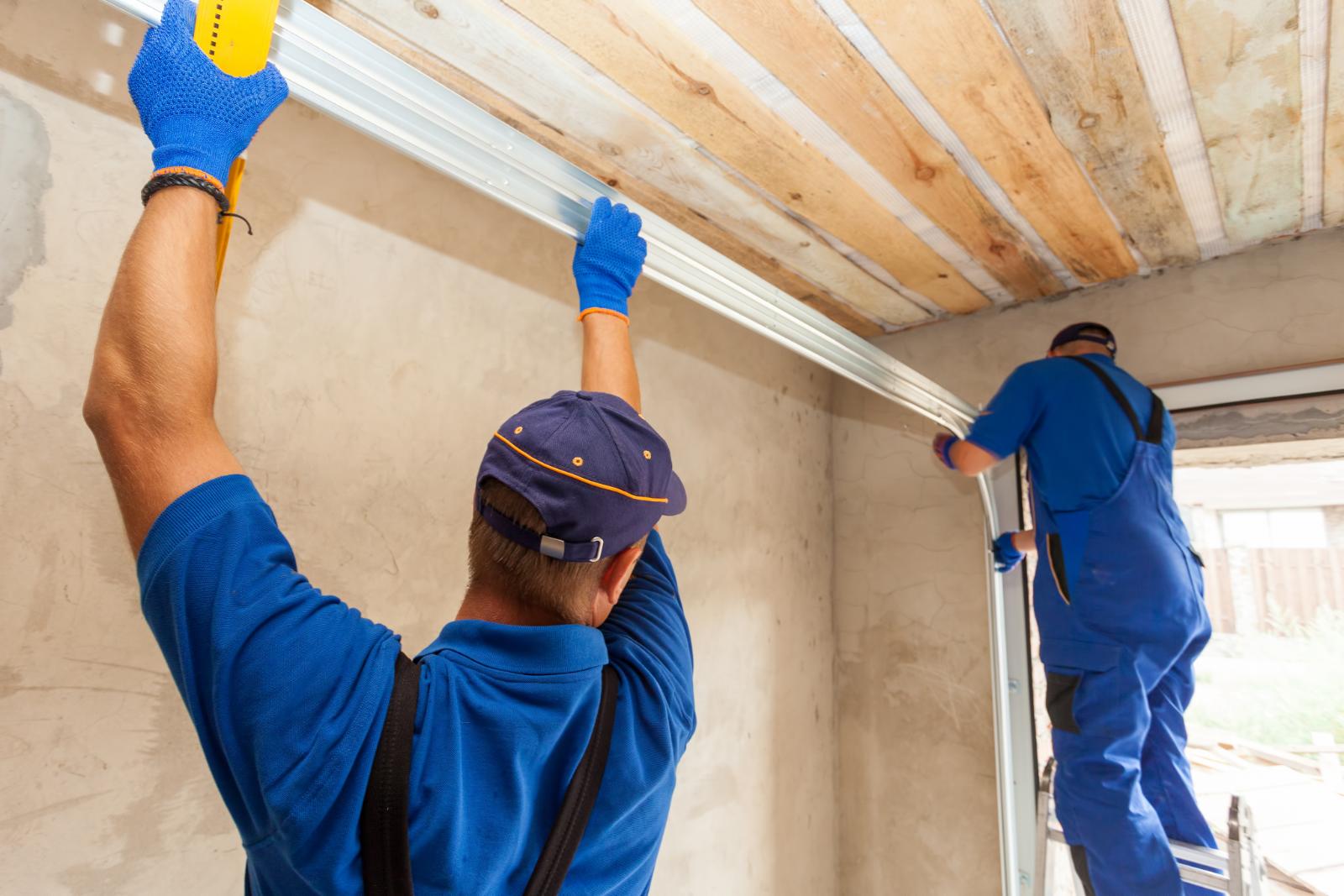
Contents
Your garage door might show subtle signs that it needs attention, but you might not notice them right away. Unusual noises, misalignment, or slow movement often indicate underlying issues. Ignoring these clues can lead to bigger problems down the line. Have you checked for visible wear and tear or inconsistent remote responses? Understanding these signs can help you maintain both the functionality and security of your garage door. What else should you be looking for?
Key Takeaways
- Grinding or squeaking noises when operating the door indicate potential motor or lubrication issues that need attention.
- Misalignment, such as gaps or tilting, often suggests worn-out rollers or loose hinges that require immediate repairs.
- Slow or jerky movements may signal balance problems, necessitating checks for track alignment and debris.
- Visible wear like rusted hinges or cracked panels compromises security and door integrity, needing prompt replacement.
- Inconsistent remote responses could indicate signal interference or dead batteries, which should be resolved for reliable operation.
Unusual Noises When Operating
When you hear unusual noises while operating your garage door, it’s vital to pay attention, as these sounds can indicate underlying issues. Grinding sounds typically suggest that the door’s motor or gears are struggling, which could lead to more severe problems if ignored.
You might also notice squeaking hinges, a sign that your door needs lubrication. These sounds aren’t just annoying; they can signal that your garage door isn’t functioning at its best.
To maintain a smooth operation, regularly inspect and lubricate all moving parts. A little preventative maintenance goes a long way in ensuring safety and functionality.
If you’re unsure how to proceed, don’t hesitate to reach out to a professional. You deserve a garage door that works seamlessly, allowing you to feel secure and confident every time you come and go.
Misalignment of the Door
Misalignment of your garage door can lead to significant operational issues and safety concerns. If your door isn’t sitting evenly in the frame, it’s time to address those alignment issues. Misalignment can cause strain on the door’s mechanics, resulting in costly repairs down the line.
Here’s a quick reference table to help identify potential door alignment problems:
| Signs of Misalignment | Possible Causes | Recommended Action |
|---|---|---|
| Door won’t open/close fully | Worn-out rollers | Inspect and replace rollers |
| Gaps on one side | Damaged tracks | Realign or replace tracks |
| Visible tilt or gap | Loose hinges | Tighten or replace hinges |
Regularly checking for these signs can save you time and money. If you notice any of these issues, addressing them promptly will guarantee your garage door functions smoothly and safely.
Slow or Jerky Movement
If your garage door moves slowly or jerks as it opens and closes, it can be frustrating and may indicate underlying mechanical issues.
One common culprit could be door balance. An unbalanced door places extra strain on the opener, leading to sluggish movement or jerky motions. To check this, disconnect the opener and manually lift the door. It should stay in place if balanced correctly.
Another factor to evaluate is track alignment. Misaligned tracks can cause the door to bind, resulting in those annoying jerks during operation. Inspect the tracks for any debris or bends; they should be straight and properly secured.
Regular maintenance on both balance and alignment can keep your garage door running smoothly, ensuring it’s a reliable part of your home.
If you notice persistent issues, it might be time to consult a professional for a thorough inspection and repair.
Visible Wear and Tear
While regular maintenance can prolong the life of your garage door, visible wear and tear often signals that it’s time for some attention.
Look closely at the hinges; if they’re rusted, it’s a clear indication they need replacement. Rust can spread, affecting more than just the hinges, and it’s not just about aesthetics—it can compromise functionality.
Next, inspect the panels for cracks. Cracked panels can lead to security issues and allow pests to enter your garage. If you notice any damage, consider repairing or replacing the affected panels to maintain the overall integrity of your door.
Addressing visible wear and tear not only enhances your garage’s appearance but also guarantees safety and functionality.
By taking these signs seriously, you’ll nurture a space that feels secure and welcoming, fostering a sense of belonging for you and your family.
Don’t wait until small issues become big problems.
Inconsistent Response From Remote
If your garage door remote isn’t responding consistently, it might be due to signal interference or a dead battery.
Check for any electronic devices nearby that could be blocking the signal.
If everything seems clear, try replacing the remote’s battery to see if that solves the problem.
Signal Interference Issues
Many homeowners experience signal interference issues that lead to inconsistent responses from their garage door remote. This can be frustrating, especially when you’re hurrying to get in or out.
Signal disruption causes can include physical obstacles like trees or buildings blocking the signal path. Additionally, remote sensor interference from nearby electronic devices, such as Wi-Fi routers or cordless phones, can further complicate matters.
To troubleshoot, try repositioning your garage door opener or moving conflicting devices away from the area. If problems persist, consider upgrading to a remote with a stronger signal.
Battery Replacement Needed
Have you noticed your garage door remote responding inconsistently? This could indicate a battery replacement is needed. Different battery types can affect the remote’s performance, so understanding which one to use is vital. Regular maintenance can help prolong battery life, guaranteeing smooth operation.
Here’s a quick reference to battery types and maintenance tips:
| Battery Types | Maintenance Tips |
|---|---|
| Alkaline | Replace every 1-2 years |
| Lithium | Check for corrosion regularly |
| Rechargeable | Verify full charge before use |
Increased Energy Bills
Rising energy bills can be a frustrating surprise, and your garage door might be to blame. If your door isn’t operating efficiently, it can let in drafts or allow conditioned air to escape, leading to higher energy costs.
Consider the following signs that your garage door may need attention:
- Gaps or cracks around the door frame
- Difficulty in opening or closing smoothly
- Excessive noise during operation
- Visible wear on weather stripping
Addressing these issues can enhance your garage door’s energy efficiency, ultimately leading to significant cost savings.
Regular maintenance, including checking seals and lubricating moving parts, guarantees that your garage door contributes positively to your home’s overall energy performance.
Don’t overlook this essential part of your house; keeping it in good shape can help you save money and maintain a comfortable living environment.
Take action now to avoid those unexpected bills!
Recap
Just like a car purring smoothly on the road, your garage door should operate quietly and efficiently. If you notice any of these unseen clues—unusual noises, misalignment, or visible wear—don’t ignore them. Addressing these issues early can save you time, money, and headaches down the line. Regular maintenance keeps your garage door running like a well-oiled machine, ensuring safety and reliability for years to come. Take action now before small problems turn into big repairs.
Recent Posts
3 Best Tips for Troubleshooting Garage Door Repairs
When your garage door isn’t functioning correctly, it can be frustrating and inconvenient. By focusing
Ultimate Guide to Residential Overhead Door Installation
When it comes to residential overhead door installation, making the right choices from the start
5 Expert Tips for Installing Residential Garage Doors
Installing a residential garage door might seem simple, but even small mistakes can lead to

